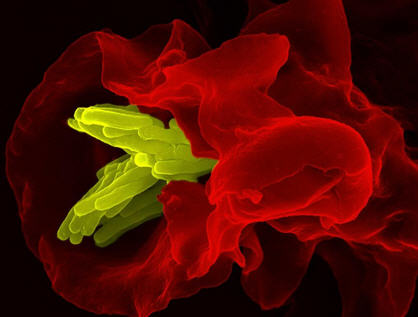Why are we still fighting tuberculosis?

It's a disease that has plagued humans since the Paleolithic era: tuberculosis. After centuries of deaths and decades of research, why are we still fighting this deadly disease? ACS Headline Science spoke with Clifton Barry, Ph.D., head of the tuberculosis unit at the National Institutes of Health about the challenges and breakthroughs in TB research. Credit: The American Chemical Society
ACS Headline Science spoke with Clifton Barry, Ph.D., head of the tuberculosis unit at the National Institutes of Health about the challenges and breakthroughs in TB research. Check out the interview in our latest episode: https:/
###
Subscribe to the ACS channel at http://bit.
The American Chemical Society is a nonprofit organization chartered by the U.S. Congress. With more than 158,000 members, ACS is the world's largest scientific society and a global leader in providing access to chemistry-related research through its multiple databases, peer-reviewed journals and scientific conferences. Its main offices are in Washington, D.C., and Columbus, Ohio.
To automatically receive news releases from the American Chemical Society, contact newsroom@acs.org“>newsroom@acs.org.
Media Contact
All latest news from the category: Health and Medicine
This subject area encompasses research and studies in the field of human medicine.
Among the wide-ranging list of topics covered here are anesthesiology, anatomy, surgery, human genetics, hygiene and environmental medicine, internal medicine, neurology, pharmacology, physiology, urology and dental medicine.
Newest articles

Silicon Carbide Innovation Alliance to drive industrial-scale semiconductor work
Known for its ability to withstand extreme environments and high voltages, silicon carbide (SiC) is a semiconducting material made up of silicon and carbon atoms arranged into crystals that is…

New SPECT/CT technique shows impressive biomarker identification
…offers increased access for prostate cancer patients. A novel SPECT/CT acquisition method can accurately detect radiopharmaceutical biodistribution in a convenient manner for prostate cancer patients, opening the door for more…

How 3D printers can give robots a soft touch
Soft skin coverings and touch sensors have emerged as a promising feature for robots that are both safer and more intuitive for human interaction, but they are expensive and difficult…





















